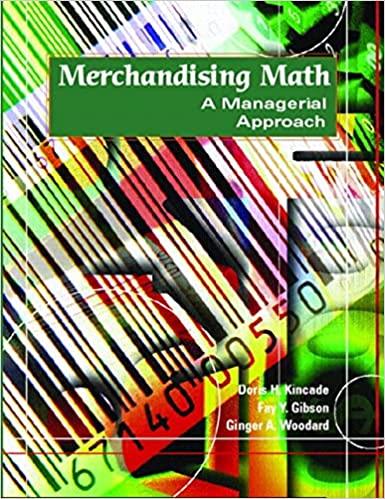Question
Question: Introduction to T-tests Correlation looks for relationships between variables. T-tests compare me... Introduction to T-tests Correlation looks for relationships between variables. T-tests compare means
Question: Introduction to T-tests Correlation looks for relationships between variables. T-tests compare me...
Introduction to T-tests Correlation looks for relationships between variables. T-tests compare means to look for differences between the means of two groups.
STATISTICAL GUIDE: The t-test is used to see if the difference between two means is statistically significant. There are multiple kinds of t-tests.
In this exercise, we will focus on the t-test for independent groups (used to compare the mean scores of 2 different groups of participants in the same study)
This t-test is used if the two means you are comparing in your sample (did 2 different types of people score differently on the same question? ex: if have a sample with 2 gender identities reported: male and female; did the males and females answer the same way? or differently? (i.e. did they have different mean scores? and is that difference statistically significant?)
To use the t-test a number of assumptions need to be met. Two key assumptions are that (1) the data is normally distributed or nearly so, and (2) the data for the dependent variable is continuous, i.e., on an interval or ratio scale. If these two assumptions (as well as others) are not met, then different statistical tests should be used to compare the two group means.
The t-test yields a p-value, which indicates whether the mean differences are significant. As with most statistical tests, most researchers consider a difference to be statistically significant when p<.05.
So, in the t-test: the null hypotheses=there is no difference in group means
As with correlation, when researchers present t-test results in a table (like Table 1 below), they often note statistically significant results with an asterisk or some kind of superscript.
It is generally safe to assume that if a result has no superscript then the result is non-significant. Still, reading table notes is necessary, so you can make sure you know what certain symbols in the table mean (and in this table they use an asterisk and what to show significance?)
Review: in the table below:
n=number of participants (in this case in each group of participants)
M=mean
SD=standard deviation
t= independent samples t-test statistic
Below is the excerpt from a study:
This study had 2 groups (married and in a dating relationship)
The married sample comprised members of 100 heterosexual couples (54% were women and 46% were men) from a Midwestern university.
The dating sample also consisted of members of 100 heterosexual couples (59% were women and 41% were men) from the same Midwestern university.
All the married and dating couples were Euro-American. A researcher selected subjects in a haphazard fashion and asked them to complete a short survey. . . . The mean age of the sample was 26.7 years (SD=2.6).
THE MEASURE IN THE STUDY:
The Affectionate Communication Index is a 19-item index that. . . assesses the amount of verbal and nonverbal affectionate communication and support on a 7-point. . . scale, with anchors of 1=partners always engage in this type of affectionate activity to 7=partners never engage in this type of activity.
Thus, lower scores indicate more affectionate communication. Table 1 shows the results for the nonverbal activities.]
| Items | n | M | SD | t | |
| Hold Hands | Dating Married | 100 100 | 3.7 2.9 | 1.9 1.7 | 3.3t |
| Kiss on lips | Dating Married | 100 100 | 2.9 2.0 | 1.5 1.1 | 4.9t |
| Kiss on the cheecks | Dating Married | 100 100 | 3.6 2.7 | 1.6 1.3 | 4.5t |
| Give messages to each other | Datting Married | 100 99 | 4.2 2.5 | 1.8 1.8 | 5.0t |
| Put arm around shoulder | Dating Married | 100 92 | 3.6 2.5 | 1.8 1.5 | 4.6t |
| Hug each other | Dating Married | 100 100 | 2.5 2.1 | 1.6 1.2 | 2.0* |
| Sit close to each other | Dating Married | 96 100 | 2.9 2.0 | 1.6 1.6 | 3.9t |
| Look into each others eyes | Dating Married | 100 100 | 3.3 3.0 | 1.6 1.8 | 1.0 |
| Wink are each other | Dating Married | 100 96 | 4.7 4.2 | 2.3 1.9 | 1.7 |
Table: : Dating And Married Individuals Reports of Nonverbal Affectionate Communication:
Should the null hypothesis be rejected for kissing on the lips?
Is the difference between the two means for hugging each other statistically significant?
Should the null hypothesis be rejected for winking at each other?
How many of the differences in Table 1 are statistically significant at the .05 level but not significant at the .001 level?
Step by Step Solution
There are 3 Steps involved in it
Step: 1

Get Instant Access to Expert-Tailored Solutions
See step-by-step solutions with expert insights and AI powered tools for academic success
Step: 2

Step: 3

Ace Your Homework with AI
Get the answers you need in no time with our AI-driven, step-by-step assistance
Get Started


